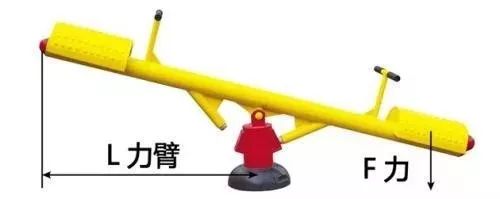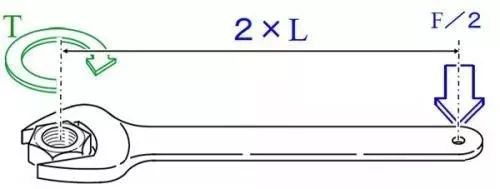释放双眼,带上耳机,听听看~!
力矩在物理学里是指作用力使物体绕着转动轴或支点转动的趋向。力矩,力对物体产生转动作用的物理量,可以分为力对轴的矩和力对点的矩。转动力矩又称为转矩或扭矩。
Where, L is the distance vector from the axis of rotation to the point of force, and F is the vector force. Moment is also a vector quantity, and the unit of moment is Newton-meter.

The concept of moment can be found everywhere in our daily life, from the seesaw we played with as a child, to Archimedes' famous quote - "Give me a fulcrum, and I will pry the whole earth", which embodies the meaning of the moment of force. Similarly, in automobiles, torque is ubiquitous, but through the rotation of a series of propeller shafts, the torque here is called torque. The size of torque directly affects the working efficiency, energy consumption, and even operating life and safety performance of the power output.
The range covered by the two is different, the range of moment is broader, all the force multiplied by the force arm result can be called moment, but torque generally refers to the moment experienced by the rotating object. For example, when a wheel rotates, the product of ground friction and the radius of the wheel is generally called torque, but it is also a type of torque. The use of a bottle driver to open a beer bottle is generally called torque, not torque.
The coupling or torque that makes the machine elements rotate (including those with a tendency to rotate) is called the rotating torque, referred to as torque. Any component must have some degree of torsional deformation (which may include elastic and plastic deformation) under the action of torque. Therefore, it is customary to call the rotational torque torsional moment, referred to as torque. The two can be used in any way, but torque is more commonly used in engineering.

Torque, torque, and torque are actually the same in a motor. Generally, in the same article or the same book, only one of the above three nouns is used, and it is rare to see two or more words used at the same time. Although these three words are used in different occasions, they all refer to the driving "moment" generated by the rotor winding in the motor that can be used to drive the mechanical load, and the so-called "moment" refers to the product of the force and the distance between the fulcrum and the direction of the force.
